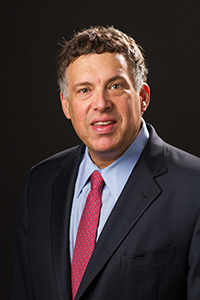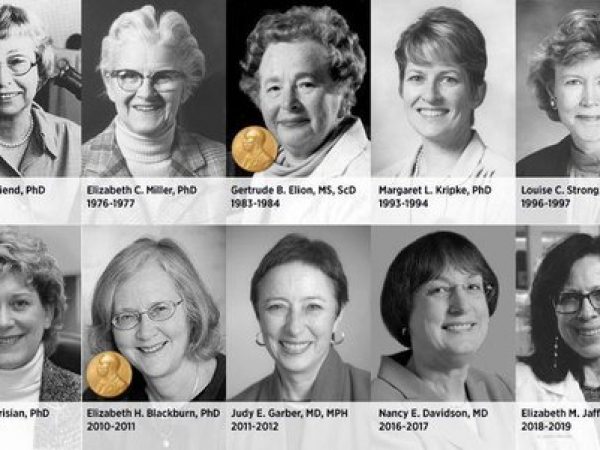Researching the Safety and Effectiveness of Electronic Nicotine Delivery Systems: What Have We Learned?
Guest post by Roy S. Herbst, MD, PhD
Yale Comprehensive Cancer Center
In recent years, we have seen a remarkable increase in the public use of electronic nicotine delivery systems (ENDS) including electronic cigarettes (e-cigarettes). These devices deliver an aerosolized form of nicotine and have evolved rapidly, with hundreds of brands and thousands of flavors currently available. Despite the increasing popularity of these products, there are still many questions remaining about ENDS and their use:
- What is in the aerosol produced by ENDS?
- What are their short- and long-term health effects?
- Does ENDS use by smokers help them to quit smoking?
- If non-smokers use ENDS, could it lead to them to start smoking traditional cigarettes?
Earlier this year, the American Association for Cancer Research (AACR) and the American Society of Clinical Oncology (ASCO) published a joint policy statement that calls for common-sense restrictions on the sale of ENDS to youth and the need for additional research. Since then, we have seen a number of studies with the goal of answering many of the remaining questions about ENDS. We are also eagerly waiting on the final deeming regulation from the U.S. Food and Drug Administration (FDA), which will describe their intent to regulate ENDS as traditional tobacco products and hopefully address many of our concerns.
On Nov. 20, the AACR Tobacco and Cancer Subcommittee hosted a webinar for scientists and the public that discussed the latest findings in ENDS research, including studies on the short-term effects on health and usage data among adults and youth.
There are serious concerns about the use of ENDS by youth
Studies about who is using ENDS products paint a troubling picture. Between 2013 and 2014, ENDS use among middle and high school students tripled, with 13.4 percent of high school students in 2014 having said that they have used ENDS in the past. This is now greater than the number of youth who smoke traditional cigarettes. While we do not yet know the long-term consequences of ENDS use, a recent study showed that adolescents who used ENDS were more likely to develop respiratory problems compared to non-users.
It is particularly troubling how ENDS are being marketed. ENDS companies, which have increasingly included Big Tobacco companies that have purchased smaller ENDS manufacturers, are not faced with the same restrictions on advertisements as traditional cigarettes. Unlike traditional cigarettes, ENDS television advertising often includes youth-oriented messages promoting ideas of celebrity, sports, sex appeal, and rebellion. These ads not only imply that ENDS use is safe, but also glamorous and “cool,” which is a page right out of the old cigarette advertising playbook (traditional cigarette advertising was banned from television in 1971).
Our joint policy statement made several recommendations for how to best keep ENDS out of the hands of youth. Regulations are needed to crack down on how ENDS are marketed, but also includes the need to restrict the flavorings used in ENDS cartridges—often named, packaged, and flavored in ways that appeal to the youth market—and the venues in which ENDS are sold.
The jury is still out on the effectiveness of ENDS
While there is strong support for restricting the sale of ENDS to youth—in a recent study, 91 percent of ENDS users and 90 percent all respondents agreed that ENDS should only be sold to those 18 and older—there is considerable scientific debate on the contents of ENDS aerosol, their health effects, and their effectiveness in helping people to quit smoking. These questions have been the subject of a significant number of research studies, but the results to date have been mixed.
One common misconception comes from the use of the term “vapor” to describe what is being inhaled, drawing parallels to water vapor. In fact, what is being breathed in is an aerosolized mixture of propylene glycol, nicotine (which is addictive), and other chemicals, some of which have yet to be identified. Furthermore, it is unclear whether the continual exposure to these chemicals that comes with the daily use of ENDS is safe, and we will not know for several years until longer-term studies begin to produce definitive data.
We also do not know enough yet to be able to declare ENDS to be effective tools in helping people to quit smoking. Again, we are in the very early stages of ENDS research, and seemingly contradictory studies and anecdotal evidence have typically dominated the discussion. The fact is that until we have a sufficient number of studies and study participants, we simply cannot make a conclusion one way or another about the effectiveness of ENDS.
Therefore, a conservative, common-sense regulation of ENDS availability is the most sensible approach for the time being. Unless future scientific evidence unequivocally suggests that ENDS are less harmful than traditional, combustible tobacco products, caution is warranted when advocating their use in helping individuals quit smoking, particularly for survivors of cancer, because cancer survivors who smoke are more likely to have poorer outcomes compared with survivors who do not smoke. Furthermore, steps must be taken to curtail their marketing and selling to the youth market, where there is no medical need for their use. There remains much that we do not know about ENDS, but we simply cannot assume they are safe or effective without sufficient evidence.
Additional information: Keeping Our Kids Safe from E-cigarettes.
Roy S. Herbst, MD, PhD, is the chair of the AACR Tobacco and Cancer Subcommittee. He is currently the vice chair for developmental therapeutics for the SWOG Lung Committee, principal investigator of the SWOG 0819 trial, and steering committee chair for the Lung Master Protocol. Dr. Herbst currently serves as the Ensign Professor of Medicine, professor of pharmacology, chief of medical oncology, director of the Thoracic Oncology Research Program, and associate director for translational research at Yale Comprehensive Cancer Center and Yale School of Medicine in New Haven, Connecticut.




